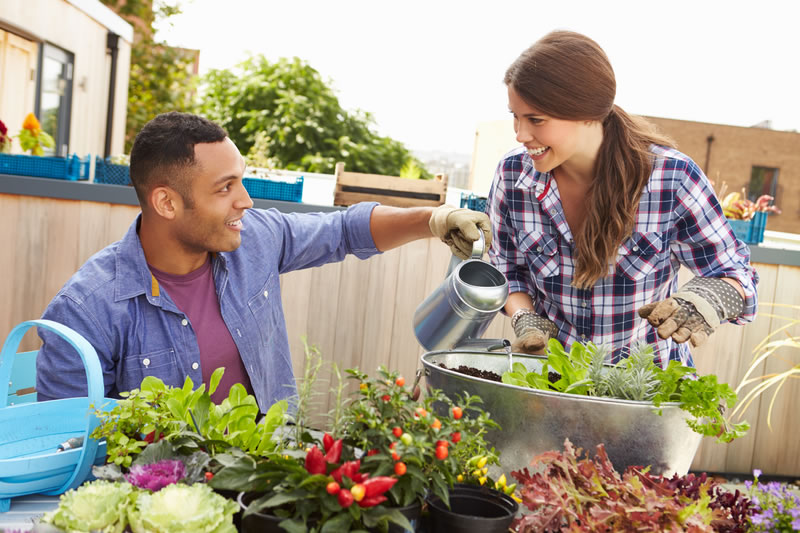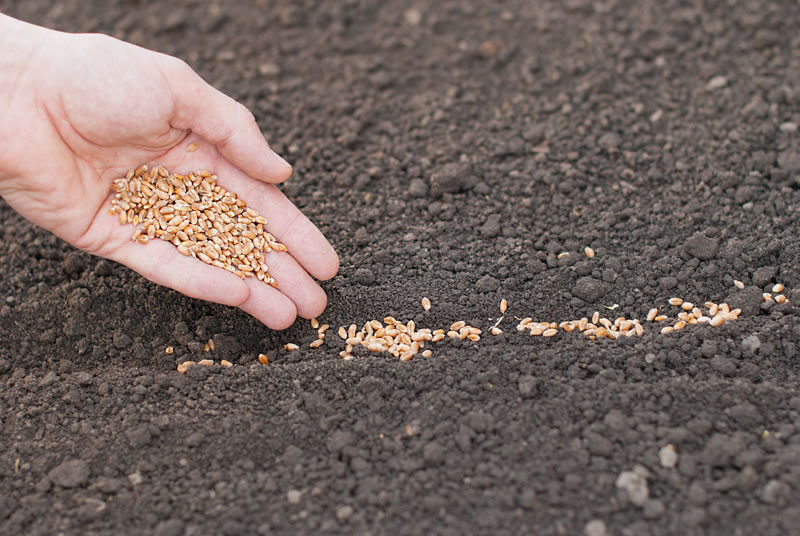
Even though it’s winter outside, it’s not too early to be thinking about planting your garden in the spring. There are many things that you can be thinking about and doing before the snow melts and it’s time to plant your garden. Let’s go over some of the best gardening tips for beginners.
In fact, if you wait too long, you won’t have time to get everything done that you want to, so it’s important to spend time learning and planning so that you are ready to go when spring arrives.
Starting plants indoors
There are many fruits, vegetables and flowers that can be started indoors and then transplanted once the danger of frost has passed. You can start your seedlings in special trays that you purchase at your local home and garden store, or you can be creative and use things like empty egg cartons. Make sure if you use the egg cartons that you use the ones made out of paperboard. They will dissolve in the ground, making transplanting easy.
Place your soil in the container of your choice, then plant your seeds and water them well. They will need to sit in a sunny spot in order to germinate, and the baby plants should be ready to transplant after about a month.
Choosing your Plants
Winter is the right time to do some research and decide what you want to plant. You will want to think what, when and where. The first thing to think about is what you will be planting. You can talk to someone at your local county extension office to find out what plants grow best in your area, or use an online tool like this one to make your choices.
Once you have decided what to plant, you need to determine when to plant. On the back of your seed packets will be a guide that tells you when plants grown best. Lettuce, for example, grows best in the spring and early summer, before the temperature gets too hot, while squash and pumpkins have a long growing season that doesn’t end until after the first frost.
When determining where to place your garden, you first need to consider the amount of sunlight that your garden will get. A good location will have between six and eight hours a day of direct sunlight. Make sure that there are no buildings or trees blocking the sun when you choose your spot.
Test Your Seeds
If you are a gardener, there is a good chance that you have leftover seeds from previous years. Before you throw them away, it’s a good idea to test them for viability to make sure that they are truly dead. There are a couple of ways to do so. The first is called the “float method”. Simply take a bowl of water and drop a handful of seeds into it. If the seeds float, they are too dry to germinate and should be thrown away.
The other way to test your seed viability is to take a paper towel, get it very wet and wring it out so that it is just damp. Place about 10 seeds in the center of the towel, fold it up and put it in a plastic bag. Place the bag in a warm place (the top of the refrigerator works well) and wait a few days.
After a week or so, check to see how many of the seeds have germinated. If six of them have done so, then it is safe to assume that about 60% of the seeds in the packet are viable. If you have 50% or less germinating, then it is safe to assume that it’s time to throw the seeds away and buy a new packet.
Understanding your Seed Packet

Seed packets typically have lovely pictures of the flower, fruit or vegetable that will grown from them on the front of the packet. While the picture is important, the really useful information is actually on the back of the packet. You will see:
- The optimum growing months for your region.
- How deep to plant the seed.
- How far apart to put the seeds.
- How many days before your first harvest.
Soil Temperature – How much do you know?
When spring begins and the ground begins to thaw, gardeners get impatient and want to get their seeds into the ground. There are four important things to think about before you plant.
- Soil moisture. Your soil must have enough moisture in order for the seeds to germinate. You can purchase a meter at any home and garden store that will tell you how moist or dry your soil is.
- Seed variety. Many seeds germinate early in the year, such as lettuce and spinach. Many gardeners use spinach as a “litmus test”–if it germinates, then the garden is ready for other seeds.
- Air temperature. In order for plants to grow (and not freeze), the average air temperature needs to be at least 40 degrees before you plant, with no threat of frost.
- Soil temperature. The soil must be at least 40 degrees if the seeds are to germinate properly. A soil thermometer, available at any home and garden store, is an easy tool for measuring the temperature.
Preparing your Garden Plot
The very first, and most important decision you will make, is where to locate your garden. Ideally, your plot should be on level ground, receive 6-8 hours of direct sunlight a day, and have good soil structure. If you are not sure what the makeup of your soil is, take a sample to your local county extension office for analysis. To prepare your selected garden spot:
- Level it out, as much as possible.
- Remove the weeds, making sure to remove the root system as well as the top, so that the weeds don’t regenerate.
- Make sure to leave as much of the soil structure intact as possible. Recreational rototilling will destroy good soil, so if possible, prepare your plot by hand.
Weed Prevention – How to Avoid
Weeds in your garden will absorb nutrients and water that were meant for your plants, and cause the plants to grow poorly, or even die. It is important to remove all weeds, along with their root structures, when you prepare your soil. You then need to treat your garden so that weeds will not return. A weed barrier is a fabric sheet that is placed on the ground that prevents the weeds from growing up through, while still allowing the plants to grow.
Green leafy vegetables
For gardeners who are looking to start their plants as early as possible, green leafy vegetables are good plants to start indoors and then transplant. Vegetables such as lettuce, spinach and kale love the cooler night temps and warm days of spring, making them excellent early vegetables.
Peppers
Peppers come in a wide variety of shapes and sizes, as well as many flavors. They are very versatile and can be eaten raw, thrown into a salad, stuffed or thrown into a stir fry. And they are great plants to grow in your garden. They have to be planted after the last frost, but will thrive on the warm days and cool nights of spring, and can tolerate the heat of summer better than just about any other vegetable.
We hope you have found these tips to be helpful as you plan your garden for next year. Stay tuned, as we feature more articles on how to prepare, plant, care for and harvest your garden!
Happy Gardening!
